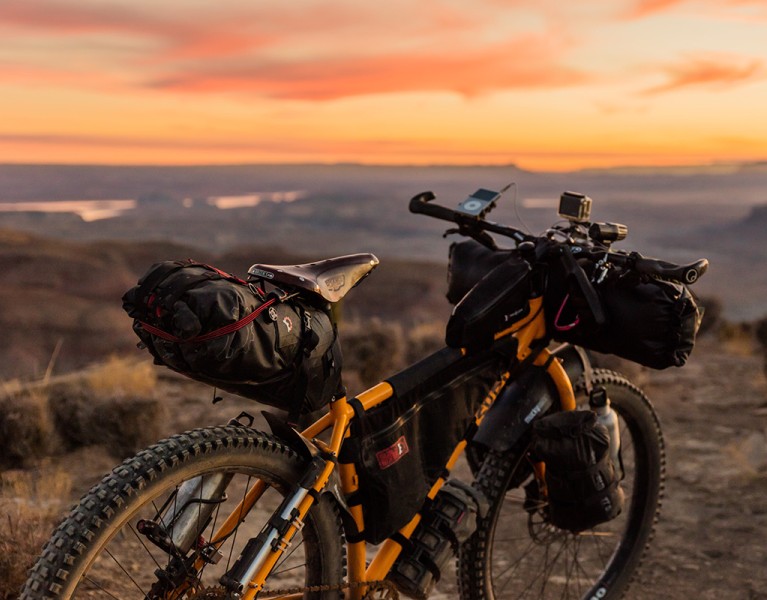
An Introduction to Bikepacking: Gear, Packing Tips, Routes
Table of Contents [Show]
Those of you new to bikepacking might be wondering if this the same as backpacking, but done on two wheels. And yes, you're kinda right! The difference is that, while bikepacking, you're actually riding a mountain bike packed with camping gear into the great outdoors.
This popular outdoor is one of the most invigorating because riding a bike into rugged territory is a great physical alternative to backcountry hiking.
Getting started to appreciate this sport is worth all your time if looking for something different in the outdoors. Take a look at our basic, six-step guide to find the right gear for a successful first trip.
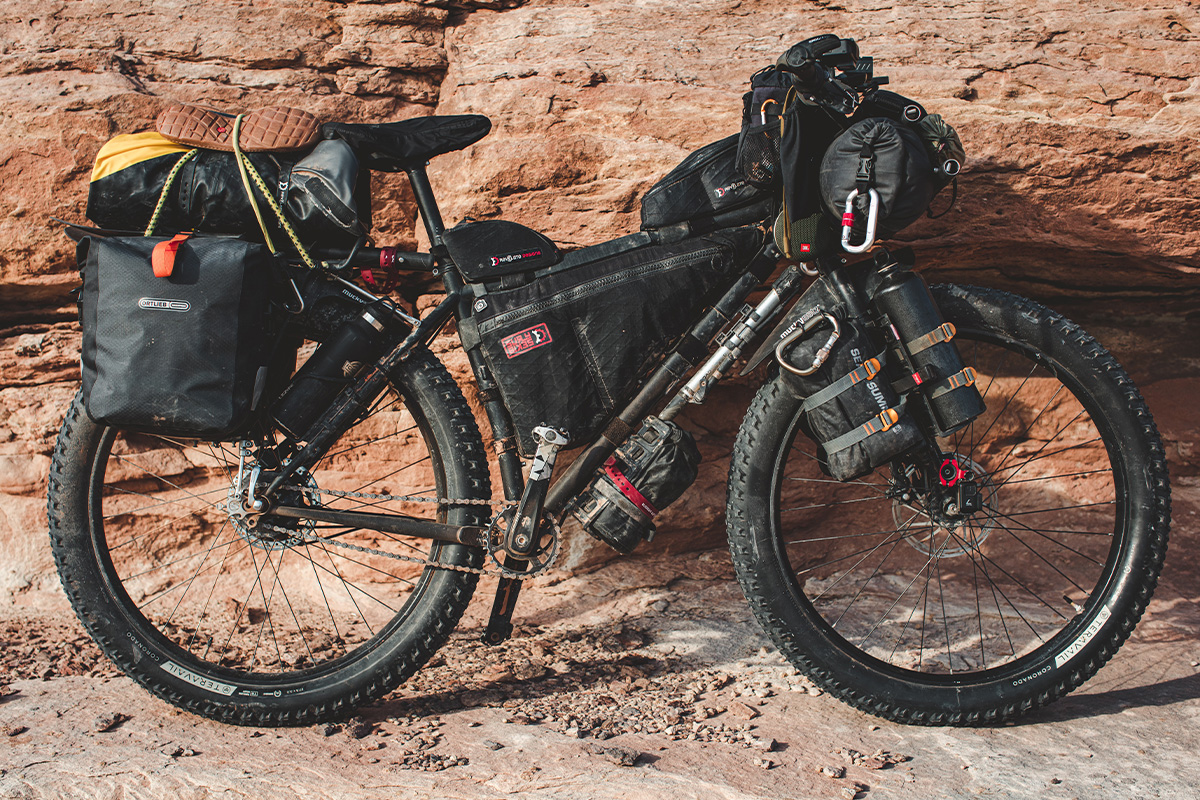
How Do You Start Bikepacking?
To get started, you'll want to look at three different types of bikepacking that best suit your interests. These are:
- Multi-day mountain biking
- Ultra-light race & gravel
- Expedition & Dirt Touring
All of these require some considerable physical endurance, though your favorite depends on the type of terrain you prefer biking in. Multi-day mountain biking allows you to bike in mountainous terrain, something that promises to build your strength. You also get numerous breaks while camping in the outdoors. In this scenario, you have to figure how to pack camping gear.
Ultra-light race & gravel lets you bike in remote locations, sometimes up to 200 miles long. This is often known as a race, giving you a chance to compete while biking on multi-terrain roads, some of which may involve gravel.
Expedition & dirt touring usually involves biking overseas. Here, you'll be traveling on roads that are low-traffic. Connecting with people from other cultures is what makes this type of backpacking more meaningful for many. You're also able to see natural international locations hardly ever traveled, at least by foot.
What Kind of Bike Do You Need for Bikepacking?
The type of bike you use all depends on the type of bikepacking you do. For regular mountain biking, you'll want to acquire a durable mountain bike. These should be as lightweight as possible if you decide to initially carry your bike into the mountains during your hike.
A full-suspension bike is best on more complicated trails, and fatter tires are needed for coastal or sandy environments.
Debates over more suspension or rigid bikes are always being argued by bikepacking experts. If the roads you're traveling are more varied, you probably won't need as much suspension on your bike.
Tire sizes also have as many personal preferences. You'll want to consider getting a bike with bigger tires if you plan to bike on more paved roads. Large tires bring a smoother ride overall, if not necessarily helping in overly rugged terrain.
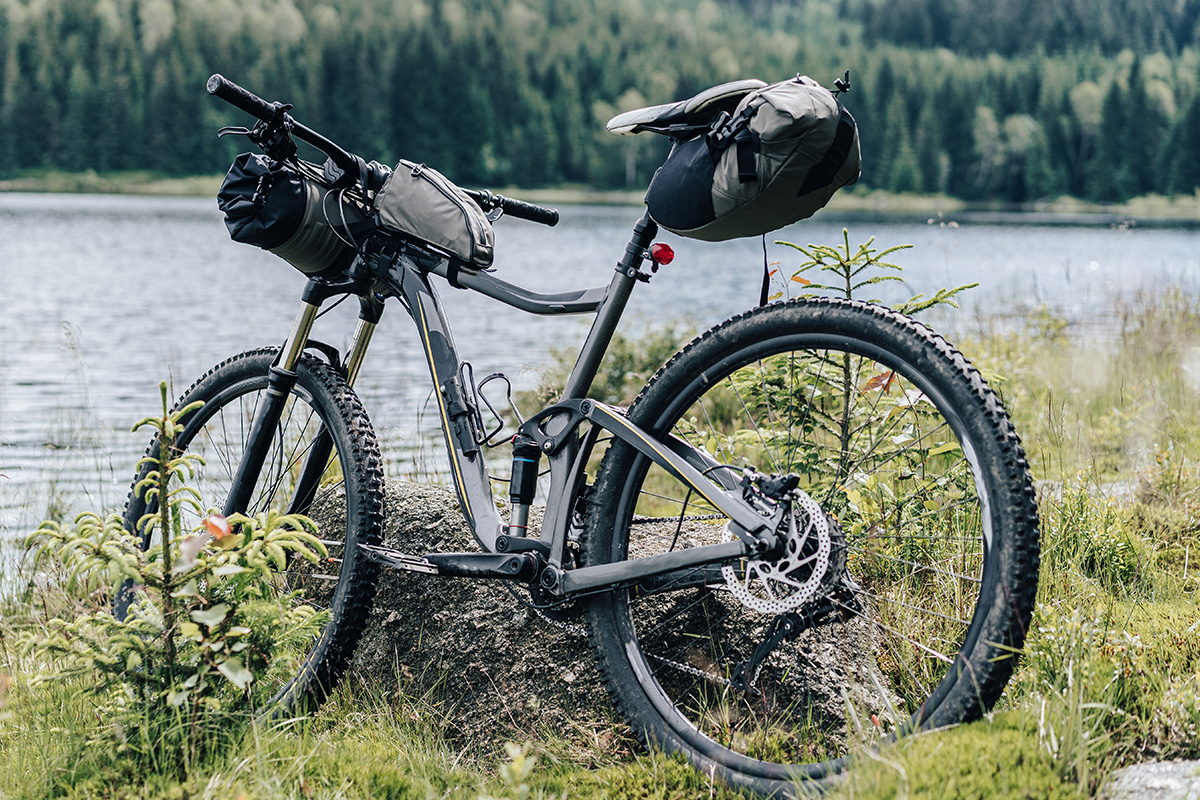
How Do You Pack a Bike for Bikepacking?
Packing for bikepacking all comes down to the type of bags you need to hold your camping gear. Bikepacking usually works by placing specific types of packing bags on the bike itself. This way, you can bike into nature and not worry about transporting the bike itself for any distance.
Three different types of packing bags are typically used in place of racks or panniers:
- Seat packs
- Frame packs
- Handlebar bags
A seat pack is the most common and can work very well in distributing weight. Attach your seat pack around the seat post for the best fit. Loading this bag with stiff clothing helps stabilize the load when riding.
Frame packs attach right to the middle area of the bike frame. A half-frame pack is the most popular, especially on rigid bikes. Placing your bag in the center of the bike gives you easy access to things while you're riding.
A handlebar bag is smaller, yet also useful for grabbing something in a hurry without having to stop. These bags attach easily to the handlebars, especially when using a harness.
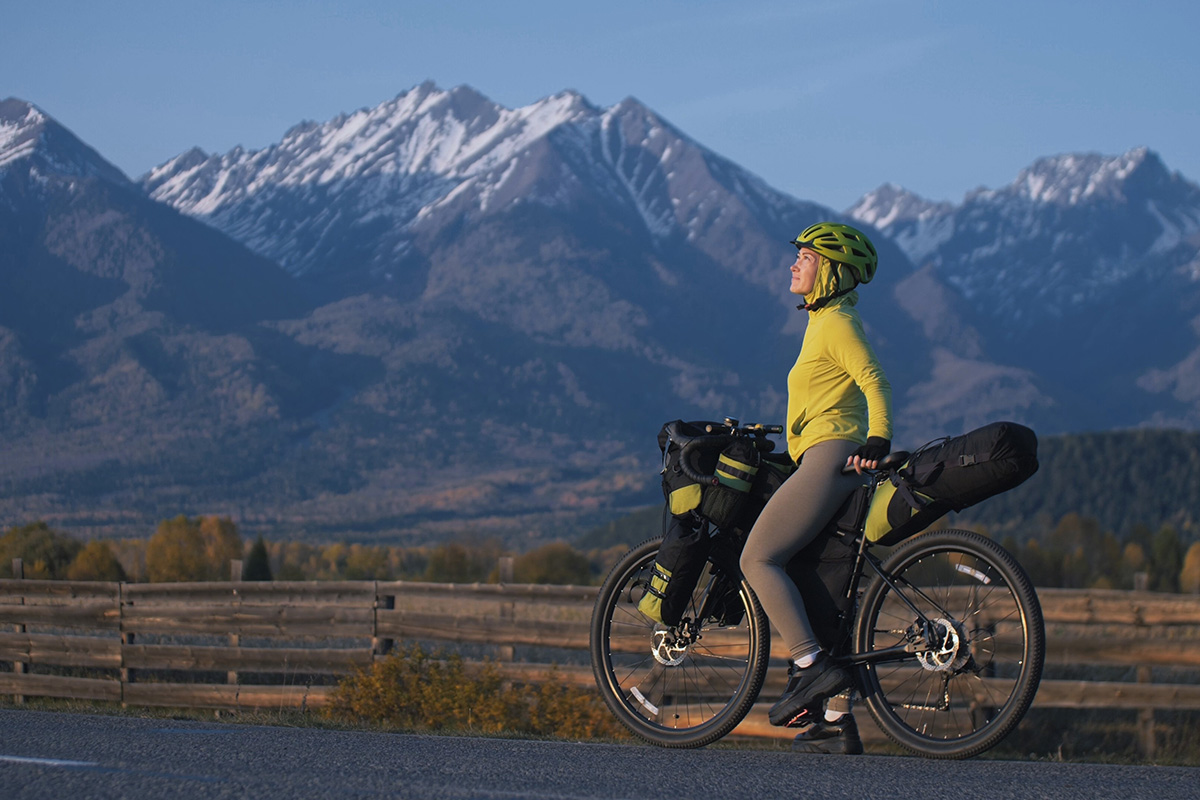
What Do You Take on a Bikepacking Trip?
Since you'll be camping out in nature, much of what you'll take is camping gear. Your most basic camping gear will be a lightweight tent and stakes. Also, packing cold food and water is no problem, unless you plan to consume warm food. In this case, packing a small stove adds more weight to your bike.
This is just the beginning of what to take along. Also, remember:
- Sleeping gear
- Hygiene supplies
- First-aid gear
- Navigation equipment
- Bike repair tools
- Clothing
In the range of clothing, you need quality shirts, pants, and coats to keep you warm if sleeping at high elevations or within stormy environs.
What More Gear Do I Need for Bikepacking?
The clothing aspect of bikepacking needs some further, serious thought. Some locations where you camp could become frigid at night, making it potentially risky without clothes keeping you solidly warm around the clock.
A good fleece coat is one of the most essential pieces of clothing gear to pack. A good rain jacket is also imperative if you intend to bike in climates prone to rainstorms.
For you men, don't forget about having a good pair of hiking pants that hold up under rugged environments without ripping or tearing. Women have various hiking pants fittings they can choose for the best comfort.
A hat is equally a must to protect from sun and rain.
Think about what type of shoes you're going to wear as well. Quality mountain bike shoes usually retail around $100.
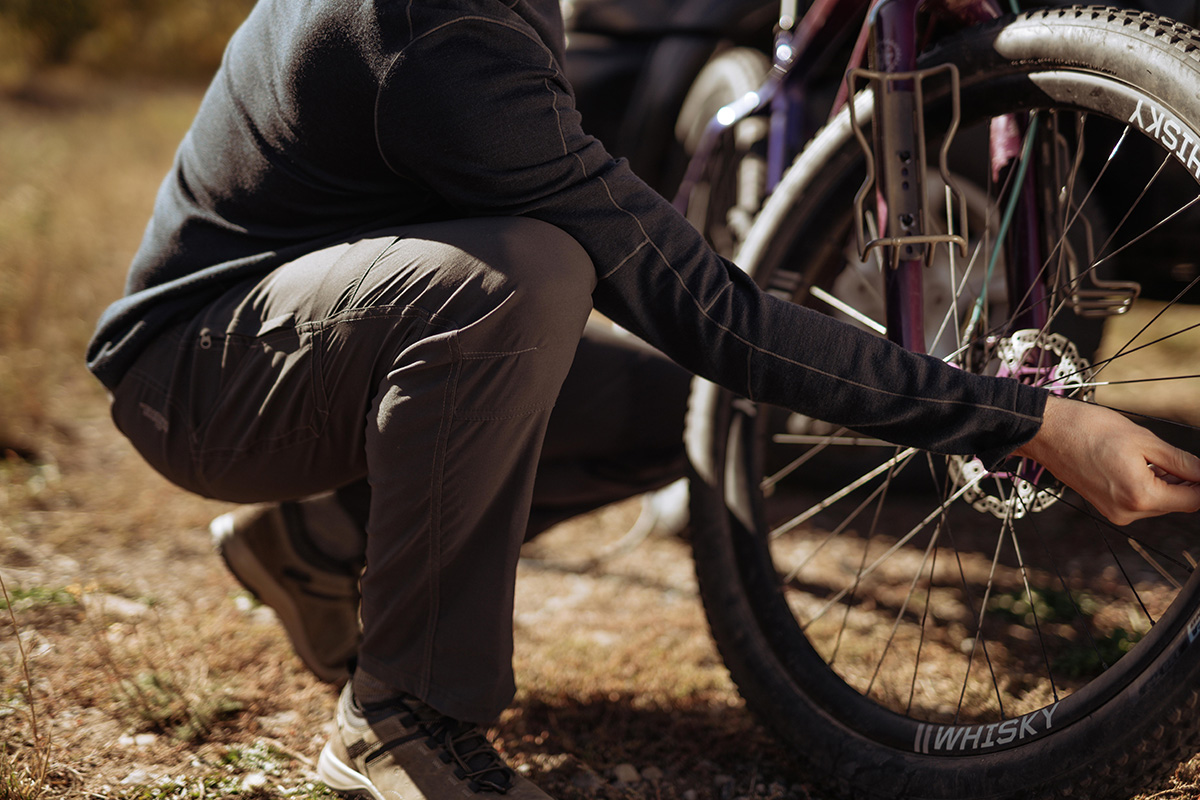
How Do You Find Bikepacking Routes?
Finding where you'll do your bikepacking is where the fun really begins. Many beautiful bikepacking trips can be had throughout the U.S. and overseas. As Bicycling.com notes, though, some places are just too hard to pass up.
A few top locations they recommend include:
- Denali Park Road in Alaska
- The Baja Divide from San Diego to San Jose del Cabo, Mexico
- The White Rim Trail in Moab, Utah
- The Colorado Trail
Many of these sites have campgrounds in select areas, including six of them along Alaska's Denali Park Road. All of these routes have varying degrees of difficulty in the terrain, something you need to assess before planning your bikepacking trip.
Let us help you find the right clothing gear here at KÜHL to make your first bikepacking adventure memorable.
Featured image by: Patrick Hendry.


